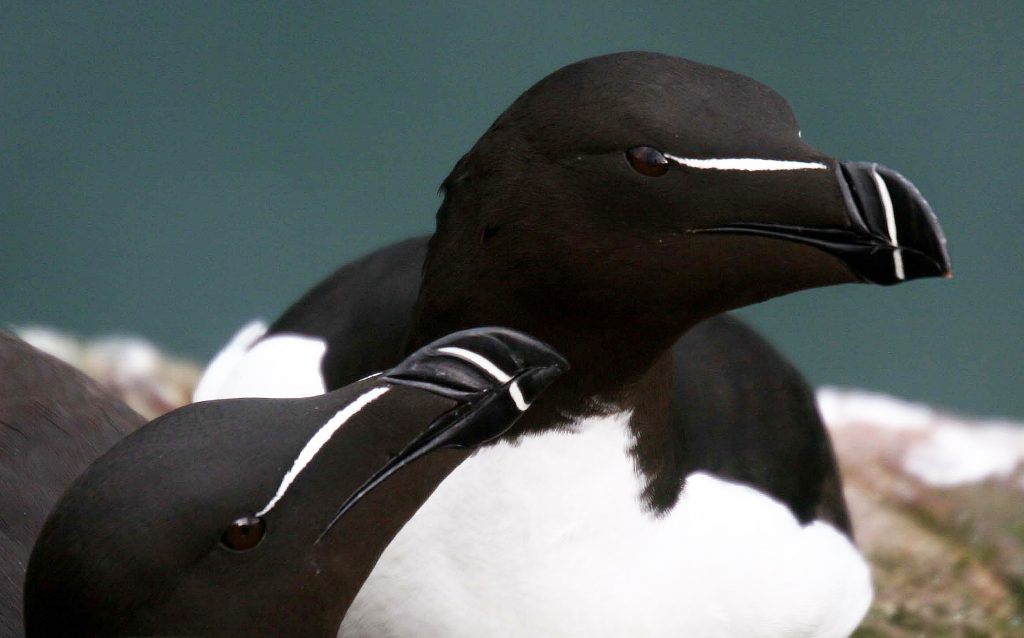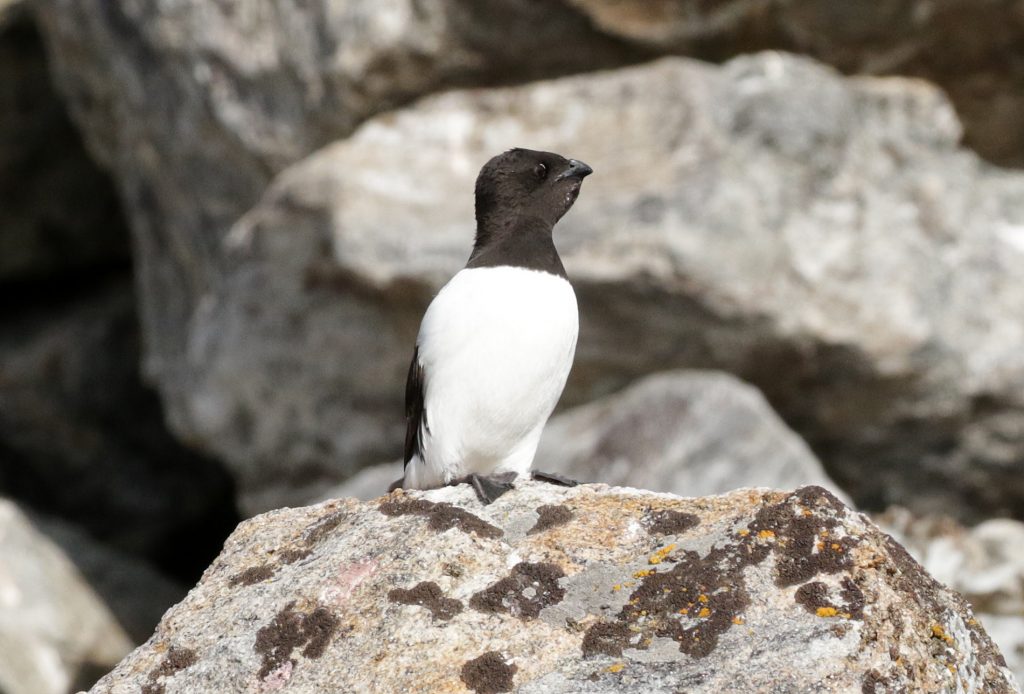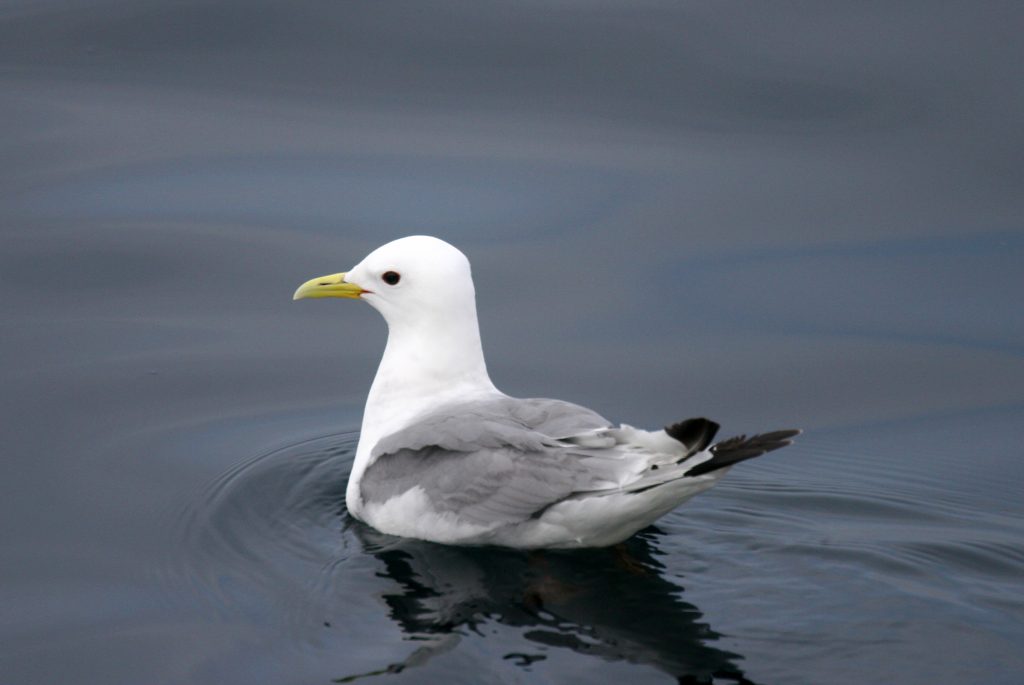Ceredigion is home to a diverse and varied population of marine life, which include beautiful bottlenose dolphins. But don’t just focus on what’s below the waves; look at what’s flying above you! Ceredigion is also home to a great collection of super seabirds! Kittiwakes, guillemots and razorbills can all be found round the coast of Ceredigion.

Razorbills are a black and white seabird that dive to grab their meals from under the water and can hold their breath for a minute before resurfacing. They have a black back and a white belly and are distinguishable by their short thick bill that has white lines marking the end of it. Their conservation status is near threatened and face many threats to their lifestyle on Ceredigion coast which can cause problems for the offspring of these very majestic birds.
Along with razorbills, kittiwakes are also found along the Ceredigion coast. These small white birds have grey wings and back and are currently on the red list being endangered. These birds are the only gull species to nest exclusively on cliffs. They, like razorbills face many threats from humans but their largest threat to their population is a lack or change in food sources which are most commonly sand eels and small fish.
On top of that, another common species found along there Ceredigion coast are Guillemots. These coastal birds come from the same family as razorbills, the Auks. Auk’s birds’ way of raising their young and living their results in them being more vulnerable to predators and threats from Human activity. Despite this their population is high and are very common at large breeding sites across the UK, but as they only come to land for breeding, they are vulnerable to oil spills.

Operation Seabird is a national campaign which aims to engage and educate people about the sensitivity of coastal birds. Through this they hope to create a new sense of awareness and hope that this in turn reduces the number of disturbances to coastal birds.
There are many threats to sea birds, and many are a result of direct Human activity. With the Welsh coast becoming a popular tourist destination in the summer months, the amount and severity of these disturbances increase alarmingly. Collision, noises, and visual disturbances can all effect these innocent creatures. Kittiwakes and Razorbills are both members of the Auk family, this means that these two species do not build nests, but instead lay and incubate their eggs direct on cliff edges, so large noise disturbances as well as visual disturbances can startle these parent birds, causing them to flee, and in some cases knock their eggs off the cliff. If these encounters continue to occur, the population of both these birds could be dramatically affected. Collisions also pose a risk to young birds as they might struggle to fly away which can leave them vulnerable to injury from boats and then predation.
To help prevent this a code of conduct initiative for interactions with birds is in place this teaches and informs the general public of what you should do to help lower their impact on the community of sea birds along the Ceredigion coast. These include advice of observing birds from a distance, never disturb or attempt to interact with birds that are rafting, and if a bird notices you and looks prepared to fly, you should back off and give the bird some distance.
Leo Allanson Work Experience Student

























